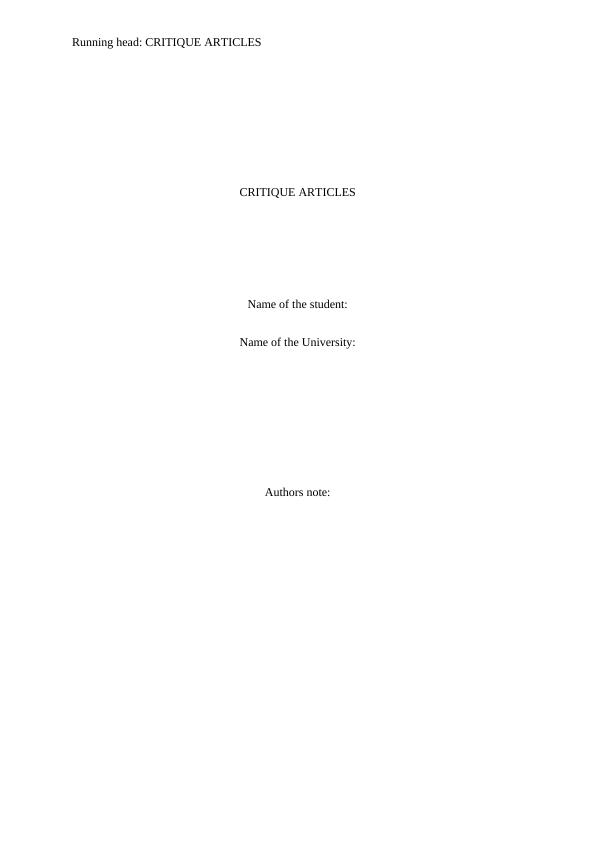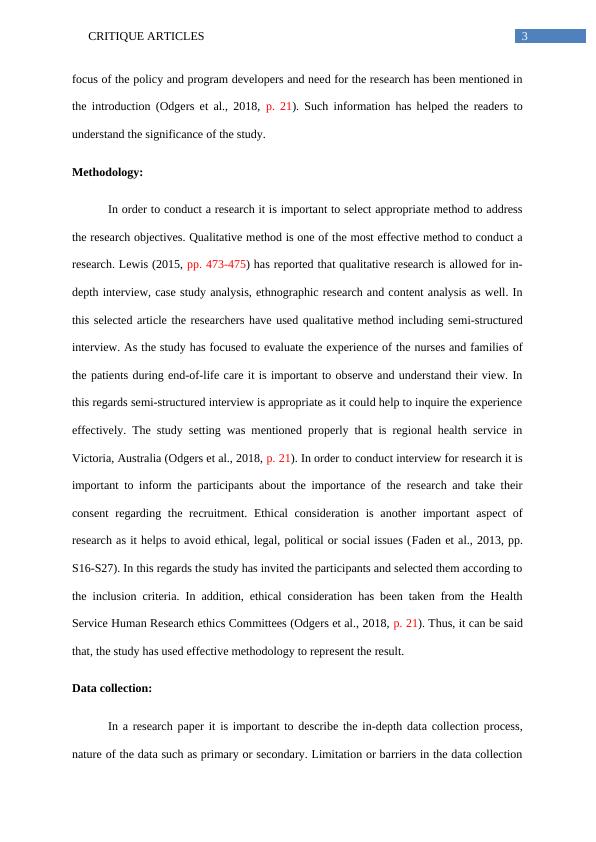Critique Articles for Evidence Based Practice in Nursing
Critically appraise one of the research articles provided, using a systematic approach to objectively review the strengths and weaknesses of the study, and referencing using CSU APA 6th style.
11 Pages2945 Words65 Views
Added on 2023-06-10
About This Document
This article critiques a journal article on end-of-life care in an acute setting to determine the effectiveness of the evidence for nursing practice. It analyzes the title, author information, abstract, introduction, literature review, methodology, result, discussion, limitation, and conclusion. The article uses a systematic approach to evaluate the relevance of the evidence in clinical practice.
Critique Articles for Evidence Based Practice in Nursing
Critically appraise one of the research articles provided, using a systematic approach to objectively review the strengths and weaknesses of the study, and referencing using CSU APA 6th style.
Added on 2023-06-10
ShareRelated Documents
End of preview
Want to access all the pages? Upload your documents or become a member.
Article Critique Using Caldwell’s Framework
|7
|2228
|24
Nontechnical skills of the operating theatre circulating nurse: An ethnographic study - Article Analysis
|11
|2575
|307
Assignment on Critique Using Caldwell Framework
|9
|2850
|102
Critique Practice
|10
|3142
|25
Nursing Perception of Risk in Common Nursing Practice Situations
|9
|2418
|452
Report on Incorporating Evidence Based Practice in Nursing
|23
|4852
|69




